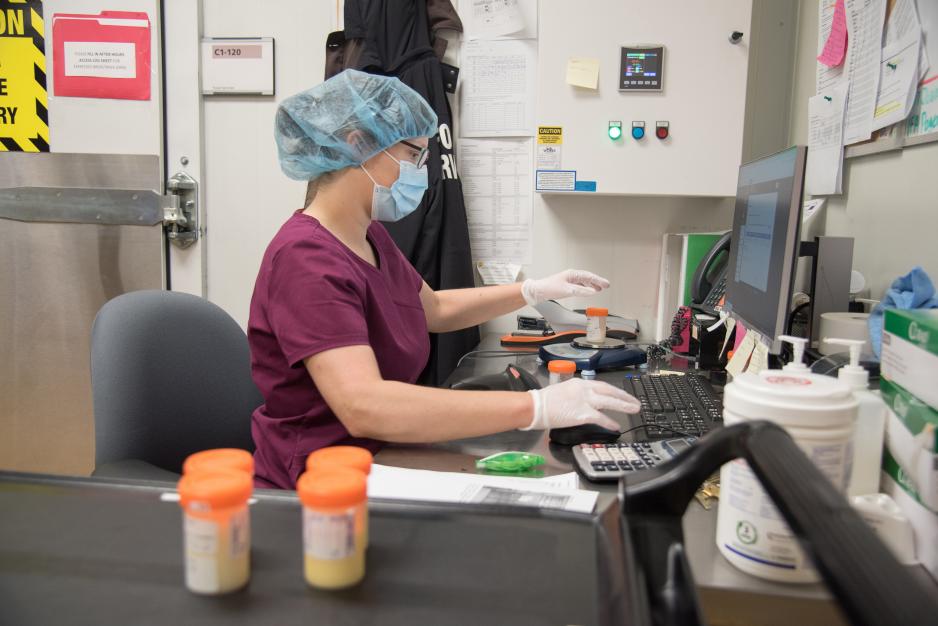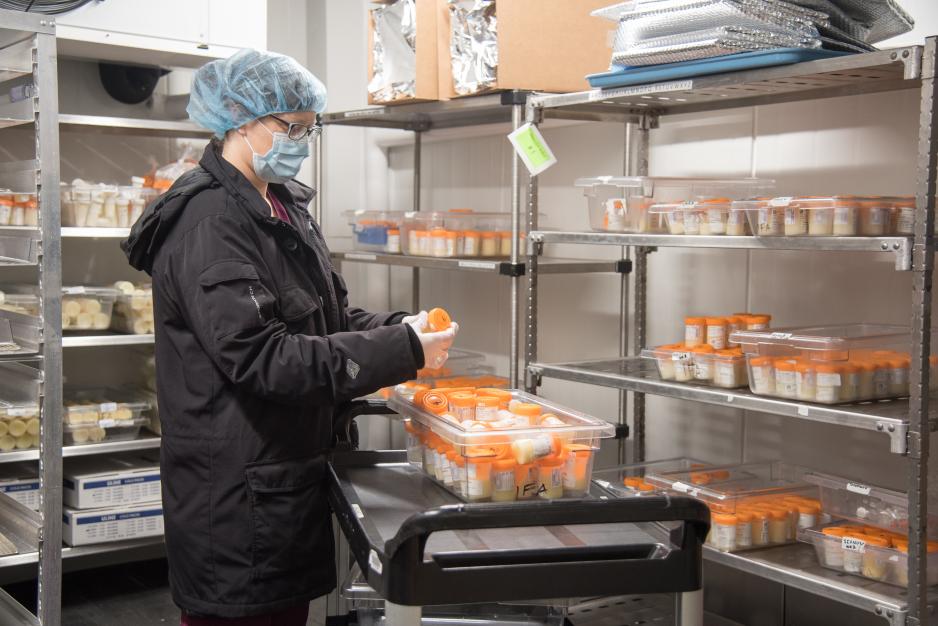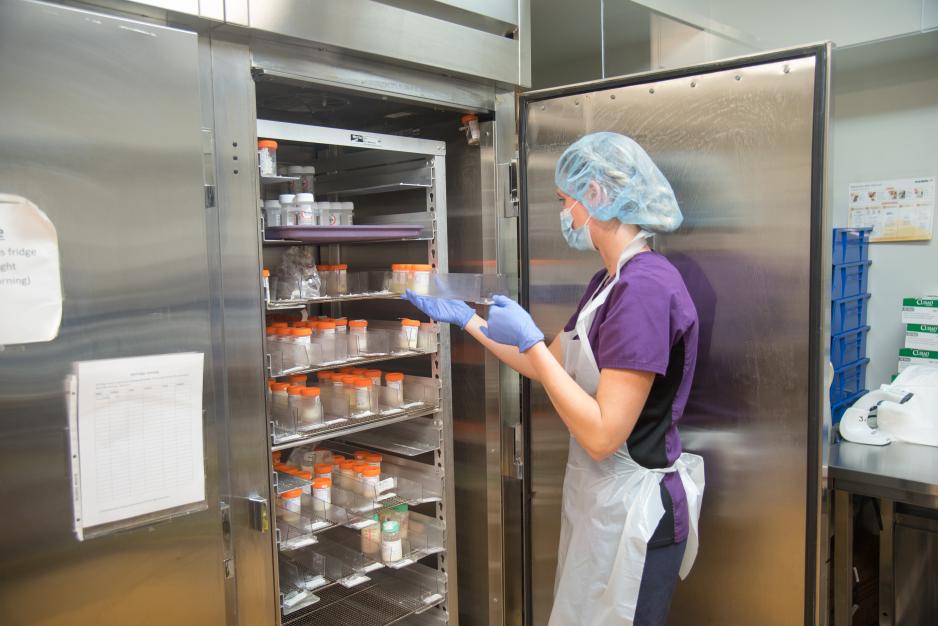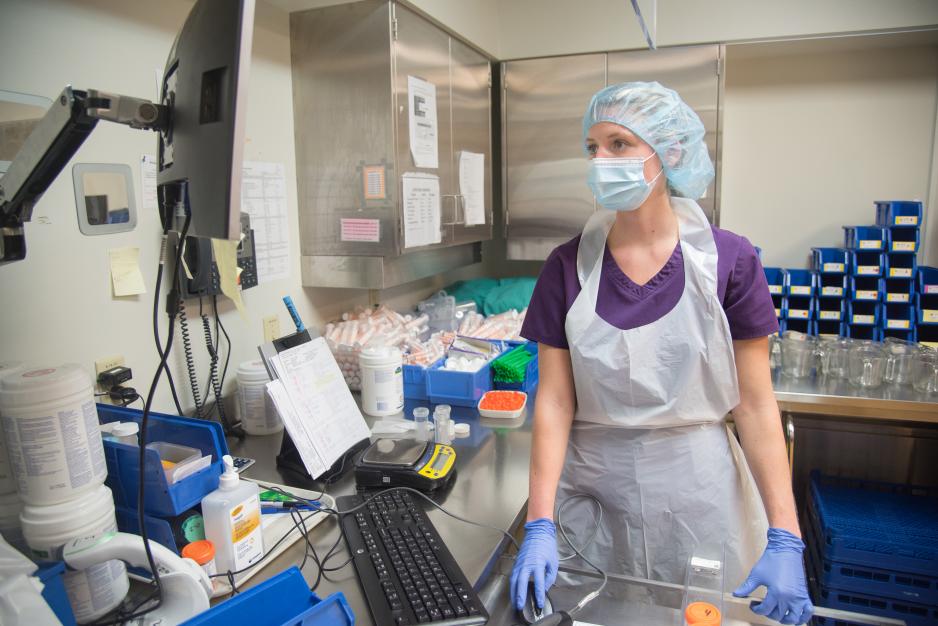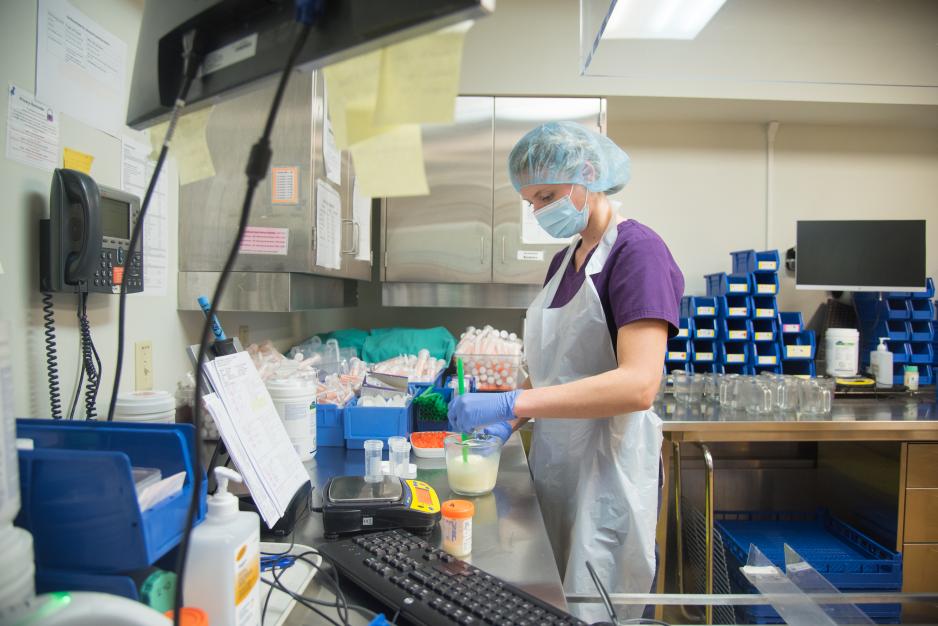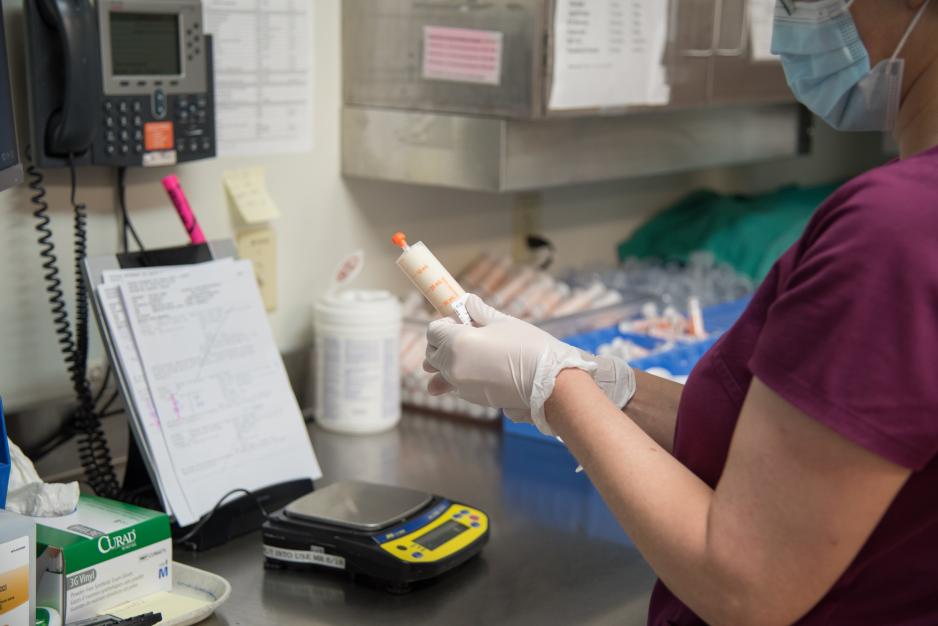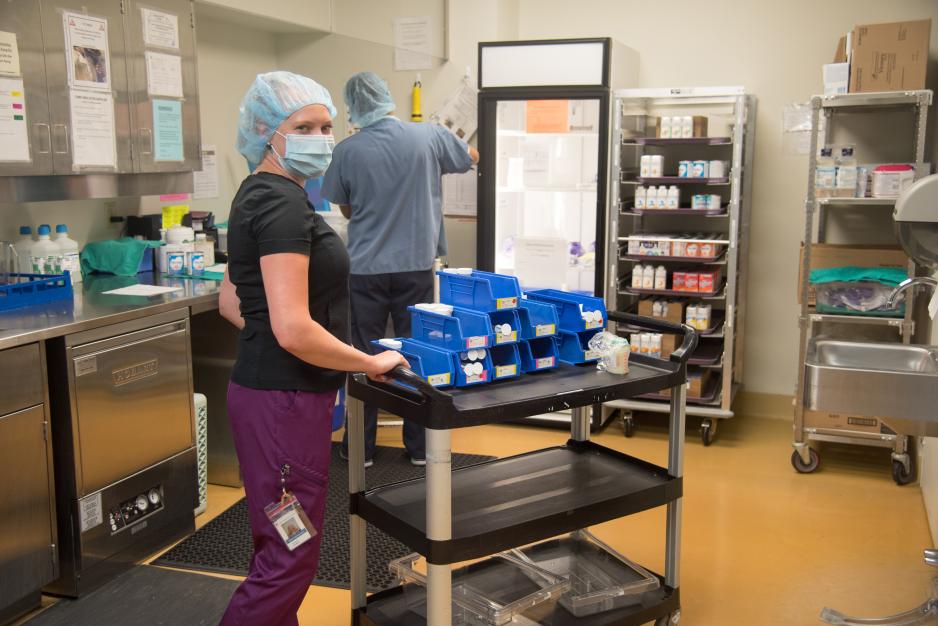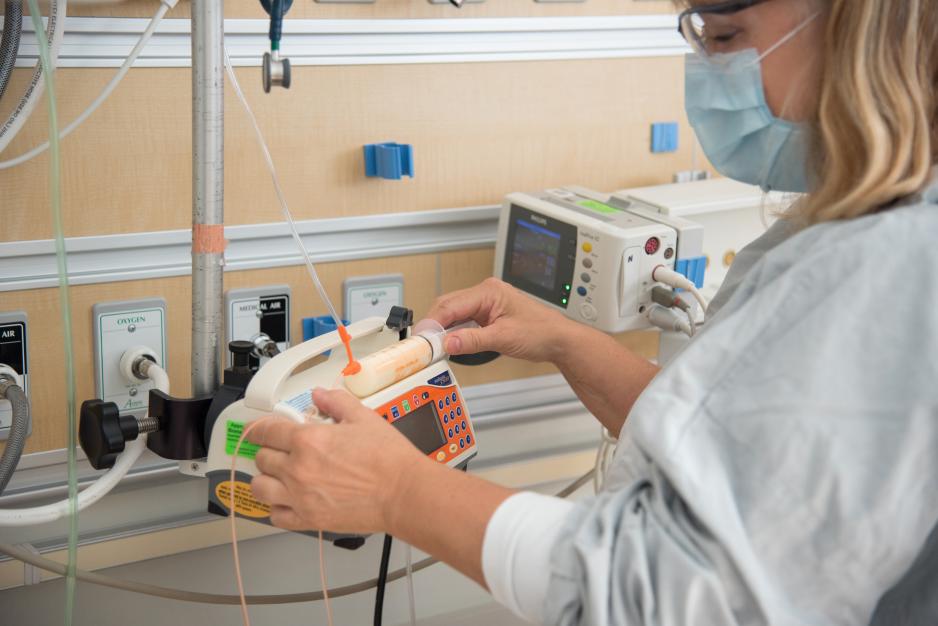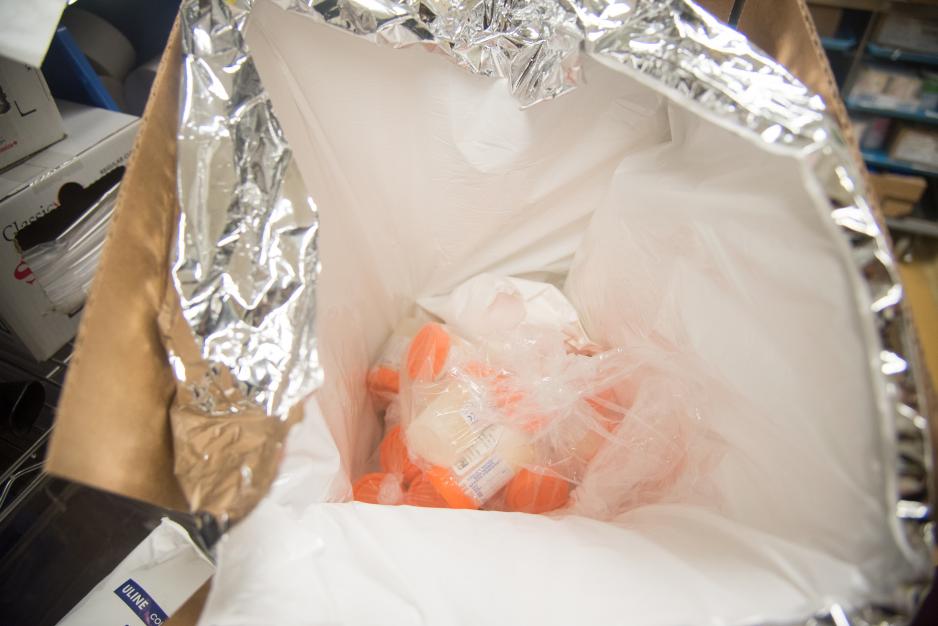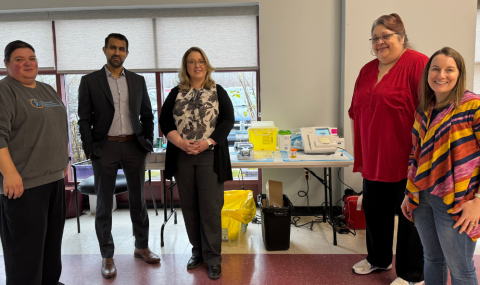The stored breastmilk from the mom’s is prepared and delivered by the infant feeding assistants in the Women & Infants Program. This program supports the feeding of babies including those in the NICU with mom’s breastmilk. It is located in the Food Services Department at LHSC’s Victoria Hospital and works in conjunction with the NICU dietitian to ensure babies receive the milk they need to grow stronger.
As human milk is a body fluid, the system was implemented to prevent the potential transmission of communicable diseases and other serious infections that can have lifelong implications by ensuring the mom’s milk goes to her baby.
The process in place ensures safety and quality throughout the management of the milk to help protect the patients. This is a photo showcasing what happens to the milk once it arrives in the Women & Infants area.
The infant feeding assistants scan the milk into the Timeless Women & Infants Program tracking software. The information entered includes the date and time of when the milk was pumped, name of the patient, weight of the milk.
The containers receive a new label and the week they were pumped is written on the lid. They go into the large freezer for storage. The recording of this data is important because the nutritional value of the mother’s milk changes weekly, even daily after the baby’s birth.
An infant feeding assistant will prepare up to three times per day for each infant. The milk is taken from the large freezer and placed in one of three fridges, marked Frozen, Thaw, and Prepped.
The milk is thawed in the fridge, or if required quickly, in the breastmilk warmer machine.
The container is scanned to ensure the appropriate milk is being used. If an incorrect container has been scanned a large red warning sign will appear.
An infant feeding assistant measures and mixes the appropriate milk and supplements, placing them in syringes, which most NICU babies require.
Labels identifying the patient name and barcode for scanning is placed on the feed which is stored in the prepped fridge to be sent to the floor where it will be scanned again and the name checked prior to feeding.
By preparing three feeds a day, the feeding assistants are able to adapt quickly to the baby’s changing nutritional needs and ensure minimal wastage of mom’s milk.
Any excess milk is stored in the large freezer until mom and baby are ready to leave. Mom has the option to take the milk home in insulated boxes and use at a later date, or donate to the milk bank.

